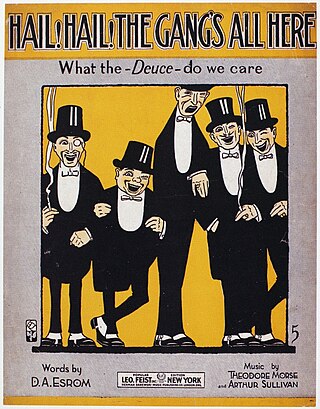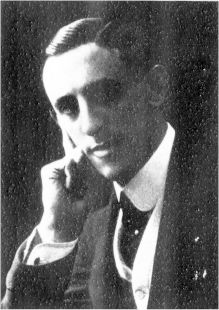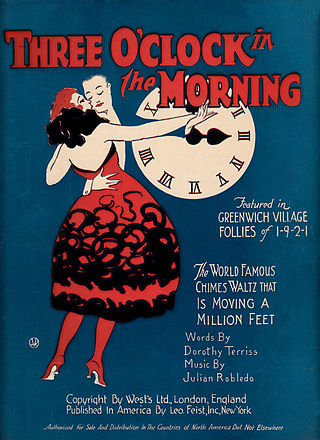This is a list of notable events in music that took place in the year 1903.

Howard Johnson was a song lyricist. He was inducted into the Songwriters Hall of Fame in 1970.

Arthur Reed Ropes, better known under the pseudonym Adrian Ross, was a prolific writer of lyrics, contributing songs to more than sixty British musical comedies in the late 19th and early 20th centuries. He was the most important lyricist of the British stage during a career that spanned five decades. At a time when few shows had long runs, nineteen of his West End shows ran for over 400 performances.
Theodora Morse was an American songwriter and composer. She was a Tin Pan Alley lyricist who collaborated to produce a number of popular songs.
Edward Madden was an American lyricist.
Ballard MacDonald was an American lyricist, who was one of the writers of Tin Pan Alley.

Hail, Hail, the Gang's All Here is an American popular song first published in 1917. The lyrics, written by D. A. Esrom to a tune composed by Arthur Sullivan for the 1879 comic opera The Pirates of Penzance, are:

Paul Alfred Rubens was an English songwriter and librettist who wrote some of the most popular Edwardian musical comedies of the early twentieth century. He contributed to the success of dozens of musicals.
"Two Little Boys" is a sentimental song about two friends who grow up to be soldiers. Recorded as early as 1903 in the United States, it became an international hit for Australian Rolf Harris 66 years later. It was published in 1903 by American composer Theodore F. Morse and lyricist Edward Madden.

James Frederick Hanley was an American songwriter and author.

"Three O'Clock in the Morning" is a waltz composed by Julián Robledo that was extremely popular in the 1920s. Robledo published the music as a piano solo in 1919, and two years later Dorothy Terriss wrote the lyrics. Paul Whiteman's instrumental recording in 1922 became one of the first 20 recordings in history to sell over 1 million copies.
The-Merry-Go-Round was a musical vaudeville production that ran at the Circle Theatre on Broadway in 1908. The music was by Gus Edwards, with a book by Edgar Smith and lyrics by Paul West; it featured skits including "Stupid Mr. Cupid" by Theodore M. Morse and Edward Madden, "He's A-my Brud" by Fred Fisher and Jesse Lasky, and "The Shop Window Girls", with lyrics by Will D. Cobb. It was directed by George F. Marion with choreography by Joseph C. Smith. The musical takes place in Mineola, New York and New York City.
Harry David Kerr was an American songwriter, lyricist, author, and lawyer. Kerr became active in music at age 15 (1895). The practice of law had been his prime avocation until 1920, when he decided to focus on songwriting. But he still continued to use his legal training in music. In 1922, while living in New York City, Kerr prepared the incorporation documents for the American Society of Composers, Authors and Publishers (ASCAP), of which he had become one of 90 charter members at its founding in 1914.
Edward Frederick Teschemacher, was a prolific writer of song lyrics. He was born at Highbury, Middlesex, England and he was educated at Giggleswick School, Settle, North Yorkshire.

Soldier Boy is a World War I era song released in 1915. D.A. Esrom wrote the lyrics. Theodore Morse composed the music. Leo Feist, Inc. of New York, New York published the song. Artist Harry Lewis designed the cover art for the sheet music. On the cover, there are three cartoon soldiers. One has his head turned to kiss a woman behind him. The song was written for both voice and piano. It is told from the point of view of a woman who is proud of her soldier boy. She addresses the soldier directly in the chorus:
"Blue bell: March Song and Chorus" is a march style song composed by Theodore F. Morse and written by Edward Madden. The song was published in 1904 by F.B. Haviland Pub. Co., in New York, NY. The cover, illustrated by Rose Starmer, depicts a soldier and a young woman. The song was recorded and popularized by Byron Harland and Frank Stanley, the Haydn Quartet, and Henry Burr.
We'll Knock The Heligo—Into Heligo—Out Of Heligoland! is a World War I song written by John J. O'Brien and composed by Theodore Morse. The song was first published in 1917 by Leo Feist Inc., in New York, NY. The sheet music cover depicts a terrified Kaiser Wilhelm II standing on top of Heligoland while shells are bursting in his back and United States sailors with guns are rushing toward him.

Fidelio Friedrich "Fritz" Finke was a Bohemian-German composer.

Clare Kummer was an American composer, lyricist, and playwright.

George Arthurs was an English songwriter, playwright, composer, author and screenwriter who contributed lyrics to several successful musical comedies such as The Belle of Mayfair (1906), Havana (1908) and Yes, Uncle! (1917), before writing dialogue for such films as The Yellow Mask (1931).










